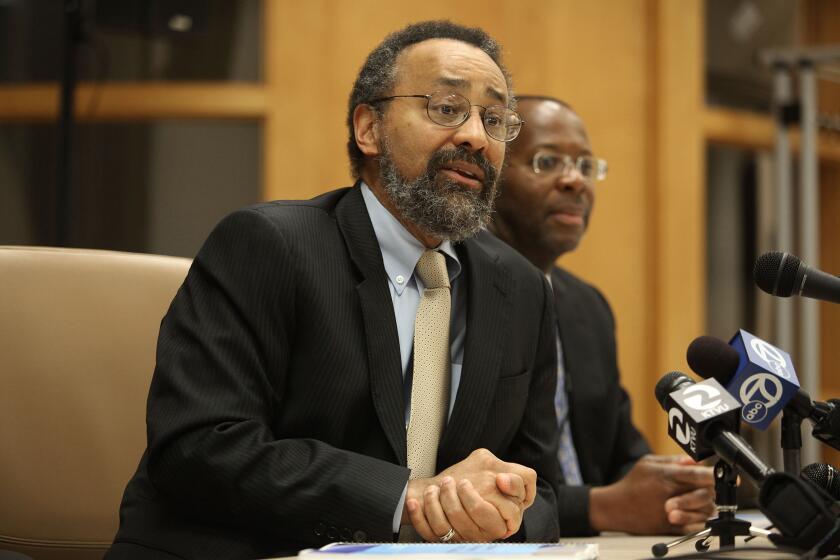State Resources Sought to Hasten the Detection of Tainted Ground Water
A water quality official is seeking $870,000 from the state to speed up the search for sources of ground-water contamination in the San Fernando and San Gabriel valleys.
Hank H. Yacoub, chief of the Los Angeles Regional Water Quality Board’s toxics section, said the search is “in slow motion” and may take until the year 2000 to complete.
But, he said, a state appropriation of $870,000 would pay the salaries of 15 new employees who could help complete the work in three to five years.
“If they give us the resources, we can do it,” he said last week. “The longer this takes, the more contamination there will be.”
Yacoub said the money would pay for faster inspection of drinking-water wells, cleaning up leaky underground storage tanks and investigating landfills that may be sources of ground-water contamination in both valleys.
“We can’t wait and try to treat the water when people are still contaminating,” he said. “We have to stop the problem at the source.”
According to the U. S. Environmental Protection Agency, ground water in the San Gabriel and San Fernando valleys has been contaminated with significant quantities of two organic chemicals found in industrial solvents: trichloroethylene (TCE) and perchloroethylene (PCE).
Chemicals Exceed Levels
Since the contamination was discovered in 1979, concentrations of the chemicals exceeding levels deemed acceptable by the state have been found in 88 of the 400 wells in the San Gabriel Valley and 47 of the 120 wells in the San Fernando Valley, according to EPA.
In 1986, eight areas in the San Gabriel and San Fernando valleys were placed on EPA’s Superfund list, qualifying them for federal funds to help investigate and clean up the sites.
The effort to deal with the contamination has involved three separate state programs to test drinking water from wells, identify contamination from landfills and monitor leakage from underground storage tanks. The programs are coordinated by either the state Department of Health Services or the regional water quality board.
But, Yacoub said, all three programs have bogged down because of the lack of staffing and the ever-increasing scope of the problem.
“Every facility we visited, we were finding something,” he said, adding: “We’re now finding hundreds and hundreds of suspected sources” of pollution.
The problem has been complicated by the fact that EPA has been forced to narrow the scope of its work because of problems in its contracting system.
EPA contracted with CH2M Hill of Corvallis, Ore., to conduct engineering work on ground-water contamination but discovered last month that much of the time allotted in the contract for engineering over the next three years had already been used. EPA officials said last month that they cannot extend CH2M Hill’s contract to cover all the work that needs to be done, adding that it will take up to a year to award new contracts.
Therefore, EPA has rationed the work each of its regional offices can assign to CH2M Hill. As a result, work has been delayed on some projects, and the number of people researching and monitoring ground-water contamination in the San Gabriel Valley has been cut.
Under Yacoub’s proposal, the top priority, costing about $450,000 over three years, would be to find the source of the contamination seeping into wells from which drinking water is drawn.
The accelerated program would allow the water-quality board to triple the area being inspected and resume investigating sites where work has stopped, he said.
The second priority, costing $1320,000, would be to finish investigating and prepare cleanup orders for 20 to 30 leaking underground storage tanks.
Other goals would include investigating 30 to 50 active and inactive landfills that may be contributing to ground-water contamination and reevaluating about 60 waste discharge permits approved for businesses in areas that are not hooked up to sewer lines, he said.
More to Read
Start your day right
Sign up for Essential California for news, features and recommendations from the L.A. Times and beyond in your inbox six days a week.
You may occasionally receive promotional content from the Los Angeles Times.







